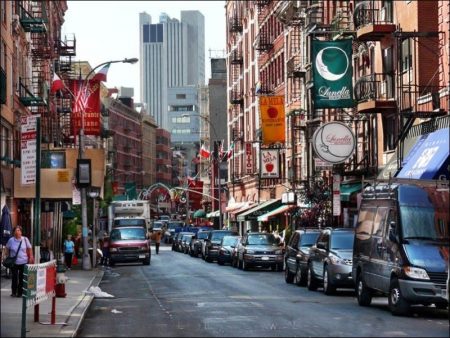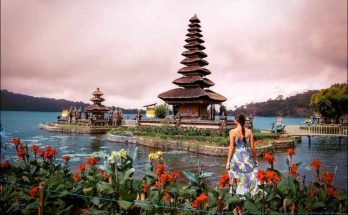Broadway, a block east of University Place, is at its drabbest in this sector. At Tenth Street and Broadway rises the lacelike Grace Episcopal Church consecrated in 1846. It was designed by James Renwick, architect of St. Patrick’s Cathedral. Typically English are the square east end, the elaboration of the ribbing of the vaulting, and the arrangement of tracery in the windows. The carved ornament of the exterior is crisp and incisive. The adjoining Grace Church School, organized in 1894, was ‘s fir st institution for training choir boys. In 1934 a day school was also inaugurated which now offers a complete secondary school curriculum.
The swerve of Broadway at this point attests to the stubbornness of Hendrick Brevoort, whose tavern stood on the present church site and who refused to allow the street to be cut through because it would mean the destruction of a favorite tree. One block south is John Wanamaker, one of the oldest and foremost department stores in New York.
It passed into the hands of its present owners in 1896. The original north) store, erected by A. T. Stewart in 1862, is believed to be the first building in the city with a cast-iron front. A skylighted “open well” in the center of the old store recalls the days before electricity made good illumination possible. Upon the completion of the new building in 1905, the two were joined by a bridge similar in design to the Bridge of Sighs in Venice. Attractions offered by the store include Christmas concerts by famous choirs, exhibits by the American Artists Congress in May, and marionette shows.
At No. 673 stands the BROADWAY CENTRAL, built in the 1870’s to be “America’s most palatial hotel.” The National Baseball League was organized here in 1876. In this hotel Edward S. Stokes shot and killed James Fisk, president of the Erie Railroad, in January, 1872, in a quarrel over Josie Mansfield, actress.
Little Italy
South of Washington Square and stretching to Spring Street lies a section of Little Italy. Numerous Italian cafés and restaurants, some small and wholly native, several — particularly on West Houston Street — having city-wide fame, cater to the needs of the residents and visitors. Here are held minor fiestas, with streets strung with lights, with singing and dancing, and the sale of candies and ices. On Bleecker Street between Sixth and Seventh Avenues is a pushcart market displaying fruits and vegetables, many, such as finochio and zucchini, exotic to Americans. Fortunio, a proprietor of a restaurant on this street, is said to have imported the first broccoli in the country. The Little Red School House, an experimental school for children, is at 196 Bleecker Street.
Eighth Street and the Art Galleries
Eighth Street, between Fifth and Sixth Avenues, with its bookshops, antique shops, food shops, tearooms, bars, and art galleries, has been called the “Main Street” of Greenwich Village. At No. 4 is the Clay Club, working headquarters and gallery for a group of sculptors. The building, originally the stable belonging to the marble house on Fifth Avenue, was remodeled by the owner, John Taylor Johnston, as an exhibition gallery for his private collection. Impressed by his success, a group of wealthy collectors organized the Metropolitan Museum of Art in 1870. At Nos. 8-12 is the WHITNEY MUSEUM OF AMERICAN ART, founded in 1931 “to help create rather than conserve a tradition.”
Views: 174



